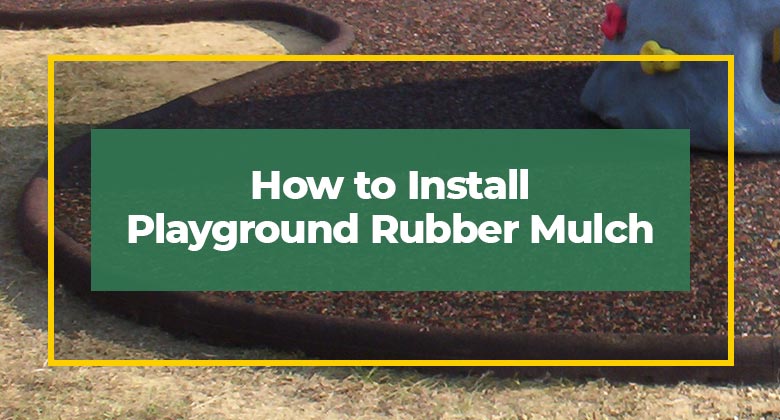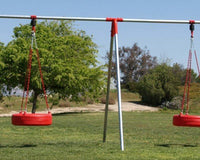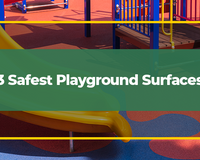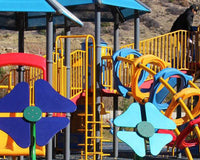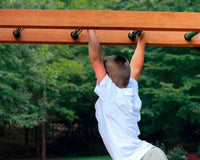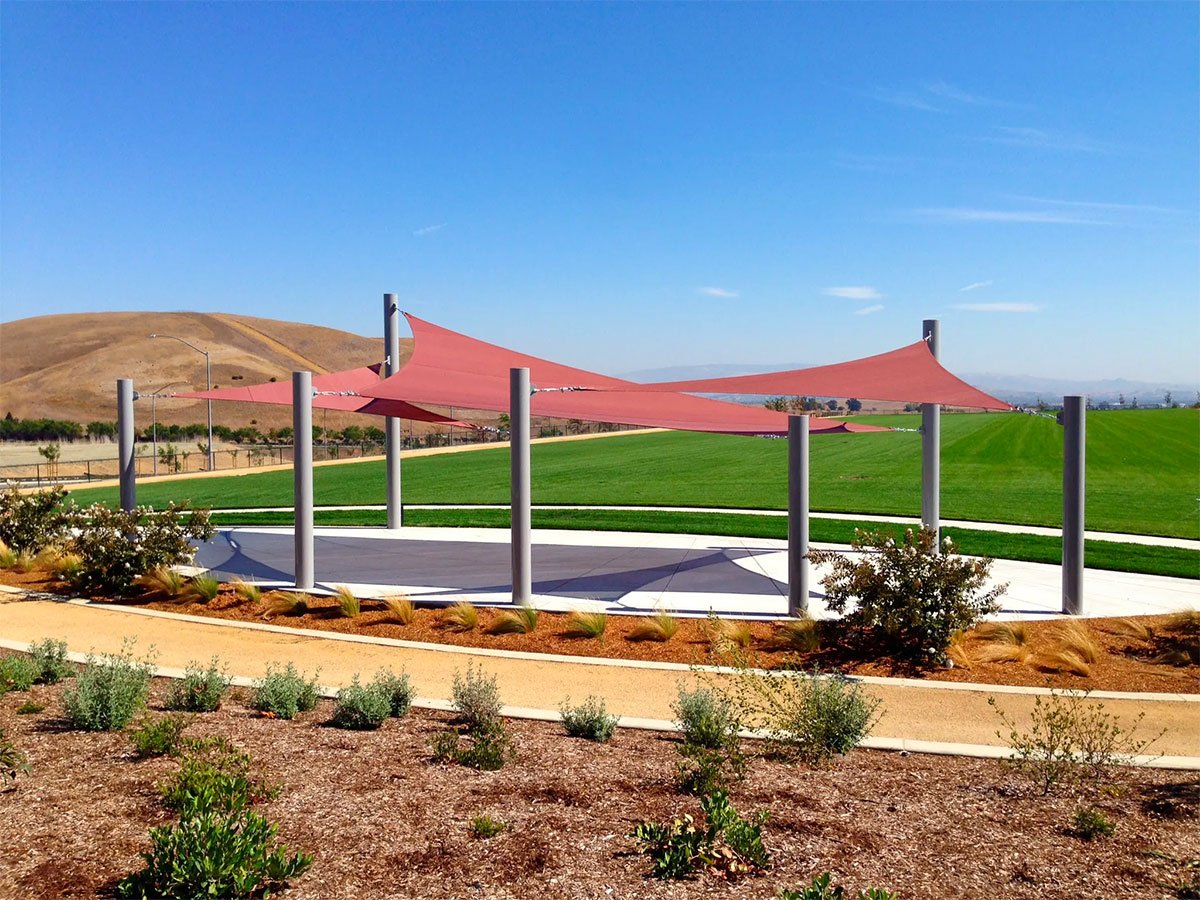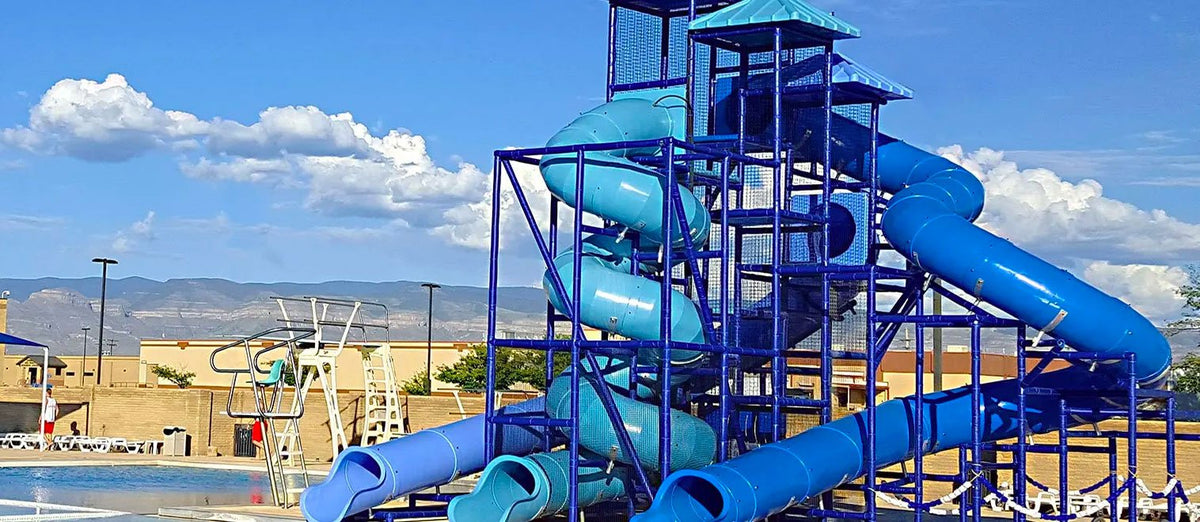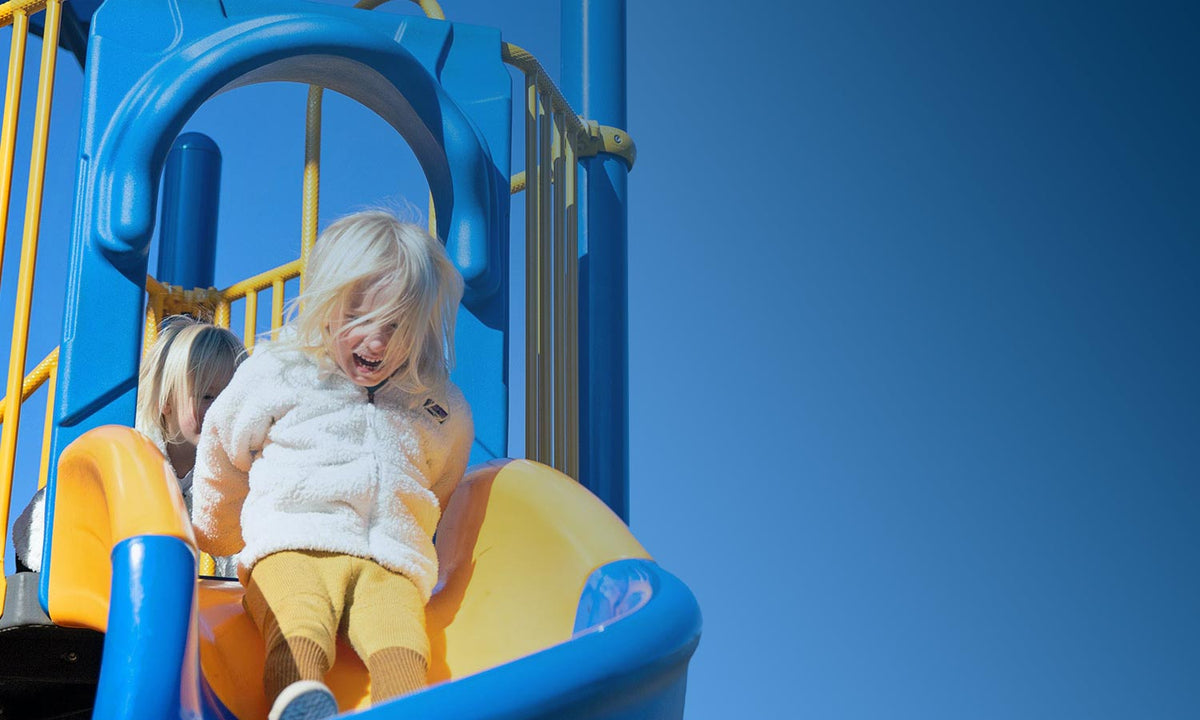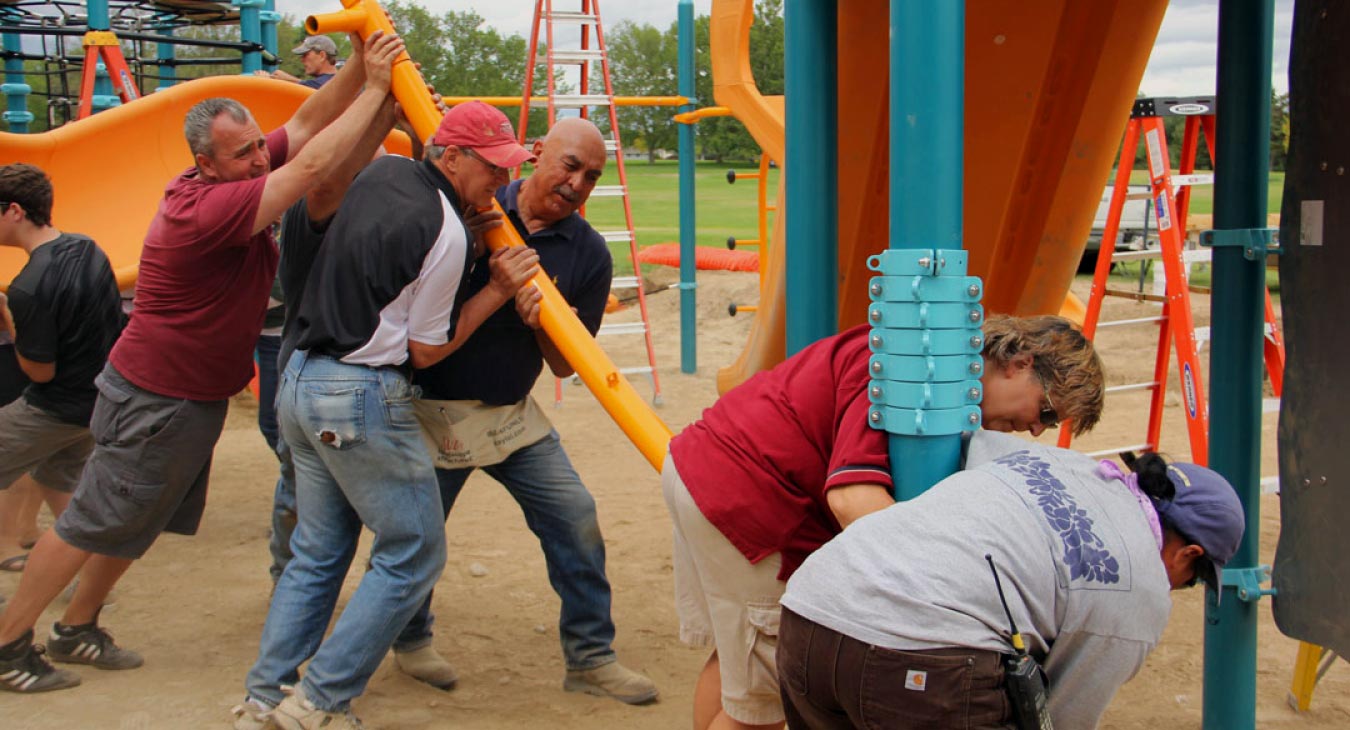How to Install Playground Rubber Mulch
The playing surfaces at playgrounds have come a long way in recent years. The wood chips and gravel that were common only a generation or two ago have now evolved into safer, eco-conscious materials. This is a welcome change for skinned knees and scraped elbows everywhere.
When it’s time to upgrade or replace the playground surface where you are, playground rubber mulch is a great option. Rubber mulch has many advantages over other playground surfaces, like sand, wood, or gravel. Modern playgrounds are increasingly switching to rubber mulch.
This article will explain the characteristics of rubber mulch and why it is superior to other playground surfaces. We will also provide detailed, step-by-step instructions on installing playground rubber mulch for a happy, low-maintenance playground makeover.
What is Rubber Mulch?
Rubber mulch is also called shredded tire mulch, as that is what it is composed of. Just like standard wood pulp mulch comes from discarded and chopped-up trees, rubber mulch comes from the more than 290 million tires thrown away every year.
Specialized machinery converts whole rubber tires into the chopped-up rubber mulch used for playground safety. These shredded rubber bits resemble wood chips but have a soft and bouncy quality that is a much friendlier surface for hours and hours of playing.
Mulch Chunks vs. Nuggets
When choosing between rubber mulch options for your park, you will want to pay particular attention to the size of the mulch particles. Your typical sizes are called “chunks” or “nuggets”. Both options will generally carry the “rubber mulch” name with it, but there are pros and cons to each size.
Chunks are larger and longer strips of rubber. They actually more closely resemble your normal wood mulch strips, which many people prefer. In general, this form of mulch is heavier and less likely to wash out with a rain storm. The added bulk and surface area adds more air and cushion as well.
Nuggets are smaller bits of rubber. They are not tiny, between the size of a dime and nickel, but they may sneak into your socks more easily than the chunk. In general, nuggets are easier to produce. Tire buffing can produce a larger amount of nuggets than strips due to its larger size. This means that nuggets are typically less expensive than rubber chunk mulch.
For the purposes of this article, we will refer to all mulch, including chunk and nugget sizes.
Why Should I Choose Rubber Mulch?
Rubber mulch has many advantages that make it an excellent alternative for your next playground surface. Rubber mulch has gained popularity in recent years for its favorable qualities like durability, cleanliness, appealing texture, and eco-friendly material.
No Maintenance
Unlike the other playground surface types available, there is no maintenance required for rubber mulch. While that means there is a higher initial cost for rubber mulch, this will pay for itself over the lifetime of your playground surface, as you will never need to fix this mulch.
Gravel, sand, or wood chip playground surfaces must be refreshed or replaced over time. These surfaces blow away, compress, decompose, or otherwise need additional replenishment and eventual replacement to maintain the safe level of playground fill for the healthy enjoyment of the playground.
Safety
It’s not hard to understand the benefit of rubber mulch when you think about tripping and falling on a playground. Would you rather skid on a pile of splintered wood or abrasive sand? Or would you like to trip and fall into a pillowy, bouncy heap of shredded tire mulch?
Several experts on playground safety determined rubber mulch is consistently the safest playground fill. Because most playground injuries result from falls, it is important to note that rubber mulch routinely absorbs more shock impact than any other kind of playground surface.
Having a springy surface underfoot is also pleasant for playground visitors of all ages. Parents and grandparents will appreciate a softer and more forgiving surface for chasing after the children on this safe playground. This results in longer and happier playground sessions!
Good Drainage
Because rubber mulch is an inorganic product (though eco-friendly), it does not absorb and retain moisture. This means that if proper instructions are followed for the installation of rubber mulch, your playground surface will stay dry and free of mold and other bacteria growth.
Wood chip mulch, a common playground surface, will absorb water. This water retention, plus a warm, sunny environment, will prompt the growth of organic material.
While possibly not harmful to inhale, this will absolutely lead to the eventual decomposition of the wood chip mulch over time. This type of mulch, along with other organic mulches, degrade and must be replaced because of their lack of good drainage.
Durable
This playground surface material is very durable because rubber mulch is made from shredded tires. Tires can commonly drive for six years and tens of thousands of miles. Even though it is shredded tire mulch, the durability of the tires is still present.
Rubber mulch will not compress or degrade like wood chips or sand, unlike other playground surfaces. The investment you make in rubber mulch upfront represents the most you will likely need to spend on rubber mulch for the lifetime of your playground surface.
Weather Resistant
Unlike the lighter wood mulch and the erosion-friendly sand, rubber mulch is much less likely to blow away in mild to moderate winds. This quality also makes rubber mulch more resistant to being tracked away from the playground in general, whether that is in shoes or being stuck to clothing.
Rubber mulch is a great choice for a playground surface that will stick around for years to come. It would be rare to find your rubber mulch blown into the neighbor’s yard or bits of rubber mulch being brought into the house on outdoor play clothes or shoes and making an annoying mess.
If you live in a climate with more extreme temperatures, rubber mulch is also a great choice for playground safety. Rubber mulch will not get hot like a sandy surface, and because it does not absorb water, it will not freeze in cold climates either.
Pest Resistant
As rubber mulch is an inorganic product, it is much less appealing to insects, rodents, and other pests who like to make their homes in outdoor play structures. Termites and rodents are not interested in eating tires, and neighborhood stray cats will look elsewhere for a litter box.
Those who follow step-by-step instructions for installing playground rubber mulch will also reap the benefits of this product’s natural weed blocking and pest resisting characteristics. Using rubber mulch means homeowners can cut down on pesticides or other landscaping products.
Curb Appeal
Rubber mulch comes in several eye-catching colors and provides a fun upgrade to any playground. This shredded tire mulch material stays neat and will not show any signs of degrading for many years.
Cost-Saving
While rubber mulch represents a higher investment up-front, the lifetime costs of rubber mulch are undeniable. As we discussed above, rubber mulch is a durable material that will last for a long time, so the initial investment in rubber mulch is most likely to be the only one you need to make. A similar wood mulch may last a fifth the length of your rubber mulch options.
This material is also cost-saving in terms of labor and time costs. Because this material stays put and does not need to be replaced, consider this playground surface to be hassle-free. Choosing a no-maintenance playground surface saves so much time and mental strain.
Eco-Conscious
The tires that make up rubber mulch are rescued from landfills and other places where they will simply sit forever. Tires are not biodegradable and have no future in a general garbage environment. Tires must be recycled, so they do not fill up our landfills and pollute our planet.
By using shredded tire mulch, you can help these tires with their final detour. Choosing a recycled product is an eco-friendly way to reduce your carbon footprint. Make sure to follow our instructions below to ensure your playground surface project stays as green as possible.
How Do I Install Playground Rubber Mulch?
Choosing to install playground rubber mulch is a great choice for a fun and no-maintenance playground surface. However, it is important to know all the steps to install playground rubber mulch to ensure this investment provides you with safe and fun memories.
Every playground area is different, and rubber mulch is a great choice for backyard playgrounds, neighborhood play structures, playsets at churches or schools, and even for large-scale parks.
These instructions provide a general overview of how to install playground rubber mulch. Be sure to consult professionals to make sure your playground site is safe and operating within any local permits.
Preparing Area
It is important that a playground area has good grading and drainage. This will prevent water from pooling around the playground. Pooling water can attract mosquitoes and other bugs and can present a slipping hazard for anyone running around the playing surface.
Grading is the process of building a consistent slope throughout the entire play area, so any water drains to one area. For some playgrounds, you may need slopes in several areas to prevent pooling. If you cannot slope the area, consider landscape drains to help further.
Also, make sure the surface you wish to fill with shredded tire mulch is stripped down to a firm, dirt surface. Remove any sod and compact the dirt for a final surface that is an even dirt base.
Tools Needed
A landscaping rake with a broad rake head is needed for grading and sloping the land. You can use this rake or a lighter one when it comes time to distribute the shredded tire mulch. Grab outdoor scissors or shears for cutting the weed blocking fabric and the bags of mulch.
How Much Mulch?
Make sure to measure the playground play surface area you wish to fill with shredded tire mulch. You will need to determine the cubic feet of your space by measuring the length, width, and height of your outdoor playground equipment.
Remember, it is recommended by the CPSC that residential playground safety requests mulch that measures about three inches deep. For public playgrounds, the depth required may be larger. You’ll want to reference your “critical fall height” or the tallest platform or standing surface on your equipment. With that in mind, check out the fall height recommendations for the mulch of interest.
The rule of thumb for your rubber mulch depth at a commercial playground is to just go with 6 inches. That amount is rated to protect from a fall of up to 16 feet, which should cover most playground equipment platform heights. Again, double check your playground equipment specs.
Once you have the length, width, and depth of your playground mulch needs, make sure you have them all in the same measurement type (feet, for instance), and multiply them together to arrive at a cubic feet needed to fill the space. Check out the mulch specifications for the amount of mulch you need to fill the cubic feet requirement.
Step by Step Instructions
Now that we’ve covered the basics, here’s a step-by-step guide on how to install playground rubber mulch.
Prepare the Area
As described above, it is important to prepare the ground underneath the new rubber mulch installation to make sure you are taking advantage of all of the benefits of rubber mulch. Ensure you have a proper slope for drainage and the ground is firm and ready to be filled.
Install Borders
Borders are important for any playground to help keep the shredded tire mulch in place. Without a properly installed border, the rubber mulch will be more easily carried, kicked, or blown away.
Also, borders make sure you have the proper depth of mulch to absorb falls. Without borders, mulch can be spread thin in high-traffic areas, making it much more dangerous to fall or trip in places throughout the playground.
Borders come in many shapes, colors, and materials, just like rubber mulch. Consider the different lines you can make with your border and the curb appeal of the different choices available. These borders are easy to install with an interlocking design that is very secure.
Put Down Weed Blocking Fabric
After the borders are in place, take the time to secure a weed-blocking fabric over the dirt you have already prepared. This is the final step to set your newly refreshed playground surface up for success.
Garden and landscaping suppliers readily have weed barrier fabrics available that will prevent the growth of weeds under the rubber mulch. This will keep your playground looking clean and tidy and will keep the promise of a no-maintenance play area.
Spread the Mulch
Now it is finally time for the fun part! To make sure this is actually a fun and rewarding part of the playground makeover experience, get the pallet of shredded tire mulch delivered as close to your playground area as possible. You will have many bags of mulch, so make them short trips!
Simply slice open the bags and pour them into little piles within the newly installed borders of your play structure. You can use the landscaping rake from earlier to pass the bits of shredded tire mulch around or use a more lightweight rake to help you spread the rubber mulch.
Distribute the mulch evenly across your entire play area and make sure you are meeting the recommended depth for mulch. Pay special attention to any trip and fall zones specific to your play structure for the ultimate safe playgrounds.
Lay out Playground Mats
With the amount of time and money you’ve invested into your playground surfacing, we certainly recommend you check out placing playground mats in the highest traffic areas and under swings and slides. That way you’ll have your rubber mulch in place for years to come.
Conclusion
A playground makeover is a great do-it-yourself project anyone with a playground can do on the weekend. With the proper preparation, installing playground rubber mulch will prove to be a wise investment for a no-maintenance playground area, delivering years of fun to come.


